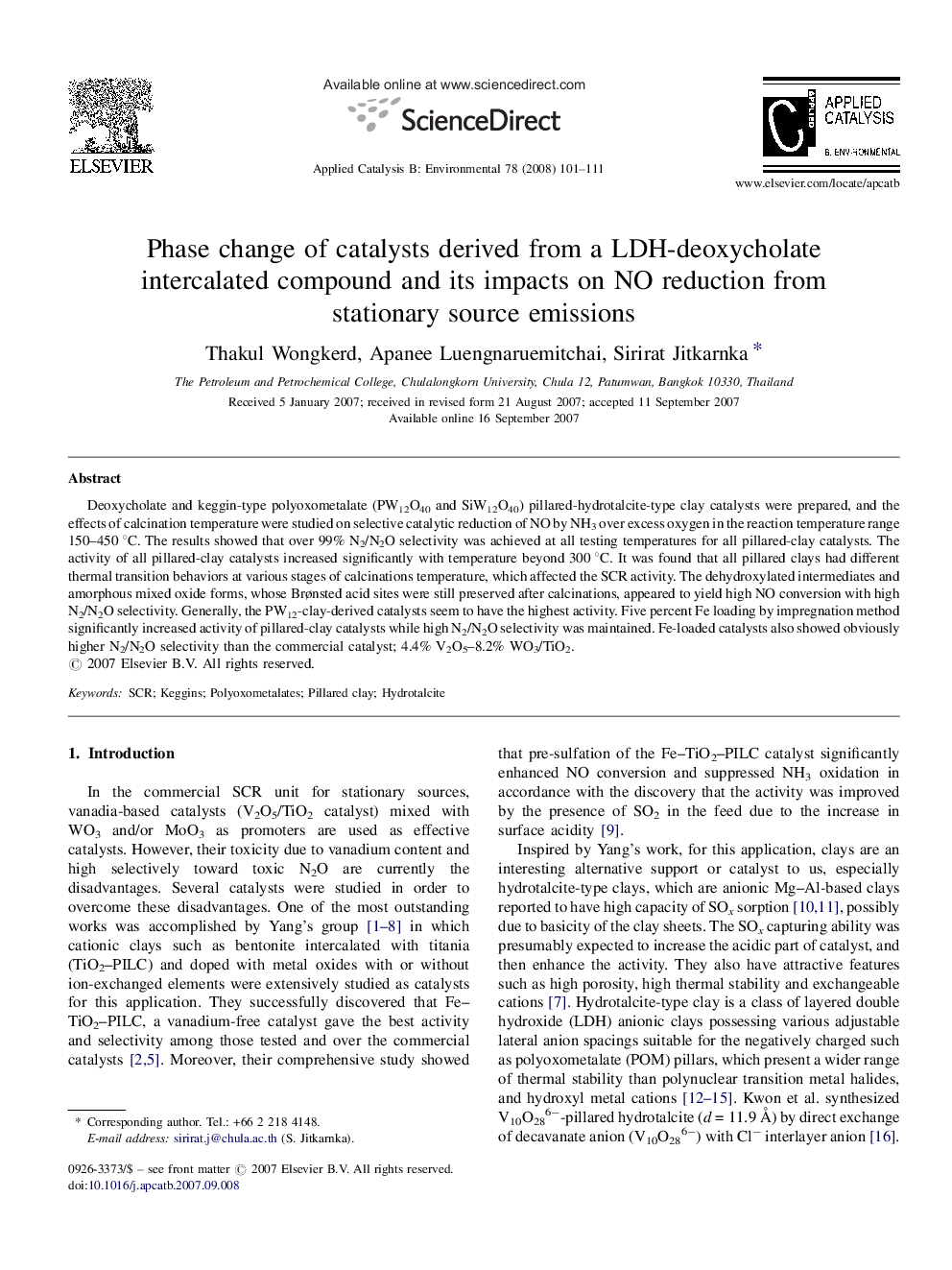| Article ID | Journal | Published Year | Pages | File Type |
|---|---|---|---|---|
| 48527 | Applied Catalysis B: Environmental | 2008 | 11 Pages |
Abstract
Deoxycholate and keggin-type polyoxometalate (PW12O40 and SiW12O40) pillared-hydrotalcite-type clay catalysts were prepared, and the effects of calcination temperature were studied on selective catalytic reduction of NO by NH3 over excess oxygen in the reaction temperature range 150-450 °C. The results showed that over 99% N2/N2O selectivity was achieved at all testing temperatures for all pillared-clay catalysts. The activity of all pillared-clay catalysts increased significantly with temperature beyond 300 °C. It was found that all pillared clays had different thermal transition behaviors at various stages of calcinations temperature, which affected the SCR activity. The dehydroxylated intermediates and amorphous mixed oxide forms, whose Brønsted acid sites were still preserved after calcinations, appeared to yield high NO conversion with high N2/N2O selectivity. Generally, the PW12-clay-derived catalysts seem to have the highest activity. Five percent Fe loading by impregnation method significantly increased activity of pillared-clay catalysts while high N2/N2O selectivity was maintained. Fe-loaded catalysts also showed obviously higher N2/N2O selectivity than the commercial catalyst; 4.4% V2O5-8.2% WO3/TiO2.
Related Topics
Physical Sciences and Engineering
Chemical Engineering
Catalysis
Authors
Thakul Wongkerd, Apanee Luengnaruemitchai, Sirirat Jitkarnka,
